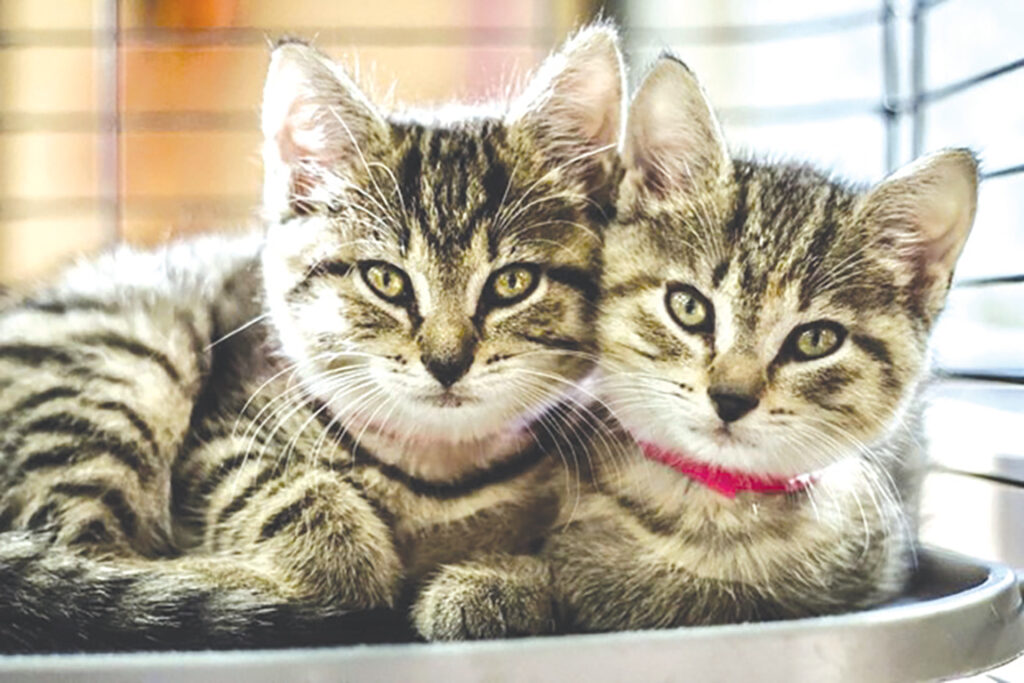By SAM DICHIARA
When I was a student at Auburn, sometimes after class, I’d drive to the Lee County Humane Society and take photos of the pets there. I was an avid nature and animal photographer, and it felt good to take pictures that the Humane Society would use to advertise how distinct each dog’s and cat’s personality was, and entice people to adopt. I walked each dog to the play area out front and played fetch until they strutted back and forth across the grass runway long enough for me to snag a good portrait. Each dog presented him or herself to the camera uniquely:

Stentorian lay with his legs tucked to his side and a dirty tennis ball caught in the middle of his toothy smile. He beamed at the camera with one blue eye and one brown.

Billy and Ray tussled over who would get to chew on the stick they found.

Tilly and Tansy curled up together as the late afternoon sun shot amber rays through the glass front door of the Humane Society.

Mabel, older and more august than all the other dogs, sunbathed in the grass and grinned with her tongue hanging out.

Of course, that was nothing compared to Elrond — who nearly tripped on his tongue.
As I took these photos and got to know the pets at the Humane Society, I kept wondering: Why do we love dogs and cats? Why do we feel the desire to adopt pets, live with them, play with them, feed them, walk them, buy them toys, take them to the vet and treat them like members of our families? My theory is that we love them because they remind us how to be mammals. We humans walk around in primate bodies but think with brains capable of multivariable calculus, philosophical treatises, ideological debate and enough mechanical know-how to put people on the moon and engineer nuclear weapons powerful enough to threaten extinction and global annihilation.
We are animals who have a habit of thinking until we forget we are animals. But, just like Tilly and Tansy, we crave warmth and intimacy. Like Billy and Ray, we want to play together and share in the sunshine. Yet every day we forego these simple pleasures that make life worth living so as to instead spend our time buying junk, waging war and watching people on screen who will never look back and see us. Our brains have tricked us into depriving our own bodies and spirits of what we need so as to pursue what we think we want.
For 178 million years, when one mammal looked at another, the other could look back. They could touch, feel each other’s skin and share a common experience. Today, the average American spends just over seven hours per day staring at a screen. A recent survey estimated that this adds up to a total of 44 years spent looking at screens. We give most of our waking lives to our favorite media personalities, movie stars and pro athletes — none of whom will ever know we exist or love us back. This is an evolutionary catastrophe. We’ve developed technologies that make our lives longer and better in every imaginable way — but we’ve also created other gadgets that distract us, isolate us and pervert our understanding of what’s important.
When I got home from those trips to the Humane Society, I’d often sit down with my laptop and spend hours editing photos, watching YouTube videos and exchanging emails. I had a 17-pound black cat named Buddha who would get fed up with all this nonsense, walk back and forth across the keyboard and even headbutt me until I gave up, put the laptop down and petted him. His brain was just small enough to teach me something. We love our pets because they still possess the wisdom we’ve thought our way into forgetting, and because they love us enough to guide us back toward the grass and the sunlight.

